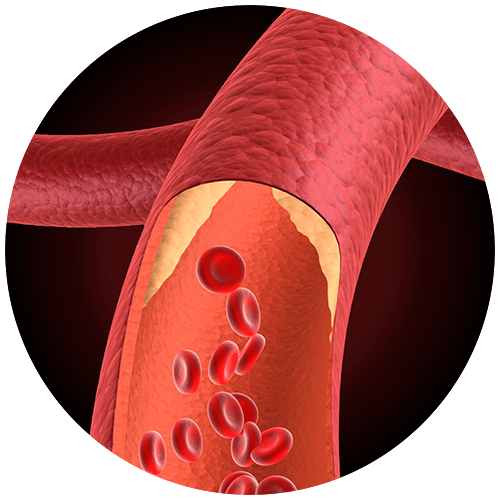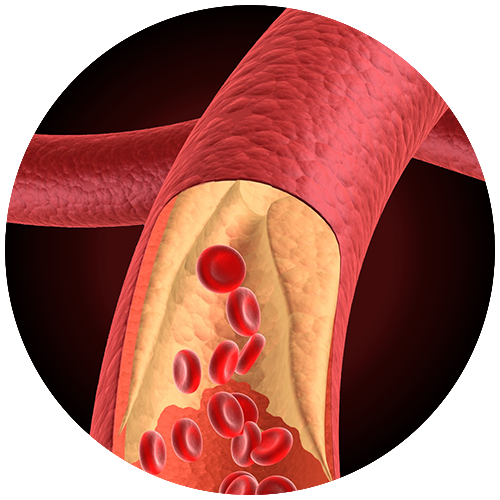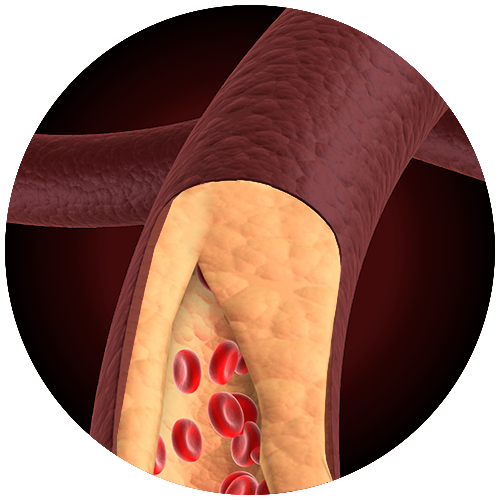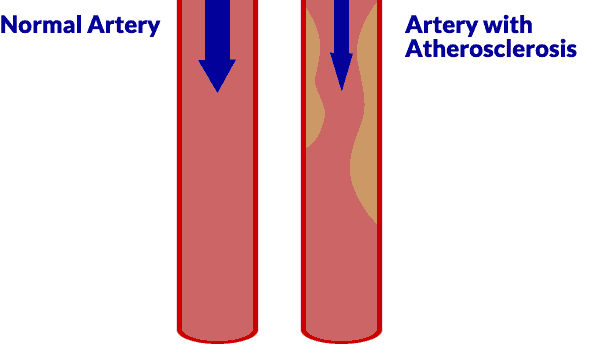What is Peripheral Artery Disease (PAD)?
Peripheral artery disease (PAD) is the narrowing of peripheral arteries due to atherosclerosis — resulting in restricted blood flow and occurring most commonly in the legs and feet.
Because PAD is more likely to affect the legs, leg pain while walking is often the result of claudication cause by peripheral artery disease.
Disease Progression

DIABETES
Puts fatty deposits and other substances in the blood.

PAD
Atherosclerosis clogged artery.

NEUROPATHY & ISCHEMIA
Oxygen starved nerves and tissue.

DEAD TISSUE & AMPUTATION
If left untreated, the lack of blood to your feet and toes can lead to infection, foot ulcers and gangrene.















Diabetes and Peripheral Artery Disease
Keep an eye on your feet.Anyone over 50 years old and diagnosed with diabetes (or pre-diabetic) has probably been told to keep an eye on their feet. But do you know why?
It's because diabetes can lead to peripheral artery disease, which can also lead to neuropathy and ischemia. The progression of this disease will eventually cause infections and foot ulcers that could require below-the-knee amputation.
How are diabetes and PAD related? Glycosylation end products are proteins or lipids that can remain in the blood due to exposure to sugars, and worsening a degenerative disease such as diabetes. These end products can lead to atherosclerosis when it becomes the plaque that can clog up your arteries — and this plaque naturally settles in your lower extremities, resulting in a reduction of blood flow to your legs and feet.
Many people have heard about diabetes and peripheral neuropathy, but only 20% of people know anything about PAD and its relationship with diabetes and neuropathy. That's an opportunity for us to stand together, make you aware of the disease, and help you find a treatment option that will keep you standing on your own two feet.

What else causes Peripheral Artery Disease?
In addition to diabetes, there are a few other things that can cause atherosclerosis and PAD. Over time, any one of these various factors can cause arterial walls to become hardened and narrow. Specifically:
- Family history of heart disease or stroke.
- Personal history of hypertension (high blood pressure).
- High cholesterol or triglycerides.
- Smoking and use of tobacco products.
- High levels of amino acid (homocysteine) in your blood.
- Inactive lifestyle and old age (55 or older).
These factors can also point to heart disease, and pose a serious risk for a heart attack or stroke. If any of these sound like you, then you should talk to your doctor about PAD or schedule a comprehensive evaluation.
Is someone you love at risk?
Amputation
is a desperate option.
Why have so many people succumbed to a non-traumatic, below-the-knee amputation when there are so many PAD treatment options to prevent this outcome? Did they ignore the signs and the degenerative infections on their feet? Were they unwilling to seek treatment, or were they unable?
“I took a stand against PAD to save my foot… and to play golf again!”
- David B.
We need your help in raising awareness for PAD because this condition is treatable and it can help save lives. The first step is to get more people comprehensively evaluated for this deadly disease.
How is an amputation deadly?
The painful truth is that 50% of people that have a below-the-knee amputation (related to diabetes and PAD) will die in less than five years.Besides the risks of infection, the mortality rates after lower limb removal are notoriously high because of the inability of older patients to recover from this major surgery.
Another contributor is the inability to recover their physical strength. People become less active when they lose their mobility, and a typical result of reduced activity is declining health, and that does not improve as we get older. An amputation renders you permanently disabled and dependent on prosthetics or wheel chairs for mobility. If mobility was a problem before amputation, then imagine how difficult it will become afterwards.
Your story does not have to end this way.
PAD is easy to diagnose and there are plenty of options available for treatment.


